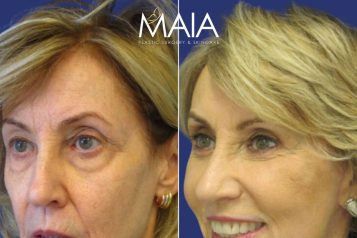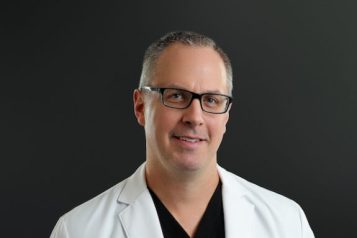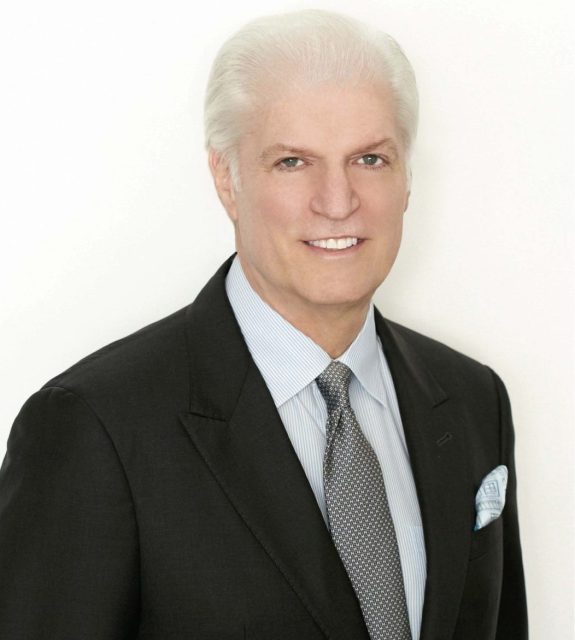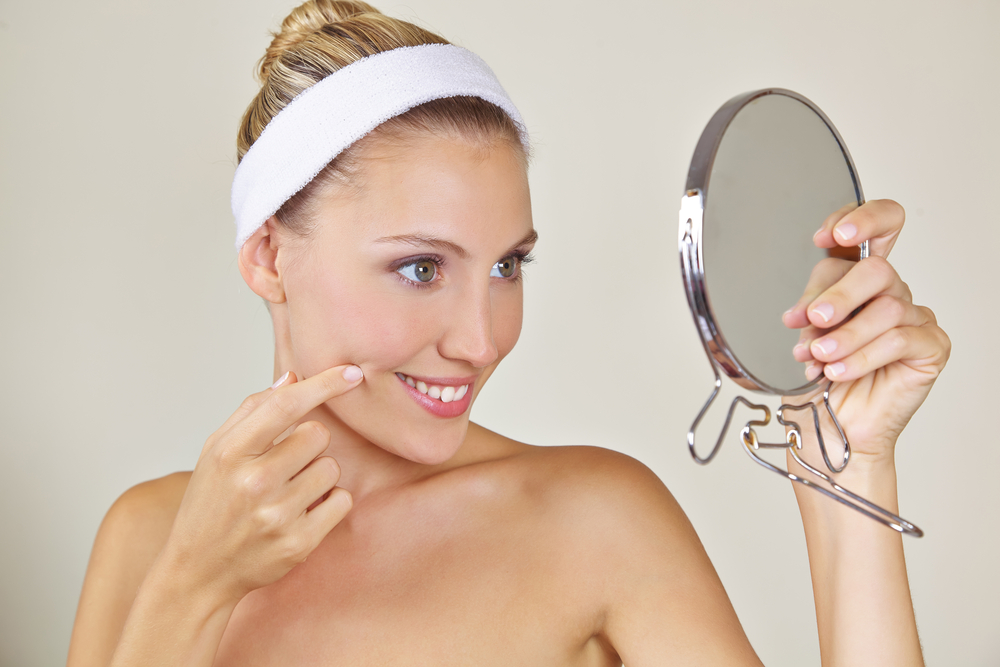 Photo Credit: Shutterstock
Photo Credit: Shutterstock
Kirsten A. Schuster, MD, JD; Iulianna C Taritsa, BA; Samuel J Lin, MD, FACS
Laugh lines, also known as smile lines or nasolabial folds, describe the folds extending from the lower edge of the nose to the mouth. They may also appear as wrinkles on the outer borders of the eyes. These folds occur naturally with the muscle use associated with laughing or smiling, hence their name, but can deepen over time. The main cause of laugh lines is a loss of collagen and elastin in the skin. Therefore, habits that cause losses of collagen or damage to the skin’s natural proteins over time are associated with an increased risk of prominent folds. Smoking, UV radiation (from tanning beds or sun damage), and dehydration are all potential causes (Calleja-Agius et al). Also, rapid weight loss can cause skin sagging that may worsen the appearance of laugh lines. Natural aging and genetics also play a part in the formation of deepening laugh lines as the skin loses the ability to maintain appropriate levels of elastin and collagen over time.
While the nasolabial folds are a natural phenomenon over time, some individuals find them to be distressing from an aesthetic standpoint. There are several treatment options. Dermal fillers injected into the deeper areas of the nasolabial folds can boost volume and also have been shown to improve collagen production and skin elasticity. Hyaluronic acid and calcium hydroxylapatite are the most common filler materials. Fillers are only temporary, however, and last from 6 months to two years.
Ultrasound and fractional laser resurfacing therapy are two other treatment options with similar effects. They can improve collagen production by harming the skin’s outermost layer just enough to promote healing but not enough to cause true damage (Kim & Choi). The results are immediate but not as noticeable as using dermal fillers. Microneedling is a newer technique that stimulates the skin to produce collagen. It may take up to nine months, with three to six visits, to see benefits from microneedling and the results may again not be as noticeable as dermal fillers. Research surrounding the practice of microneedling has shown that by inducing microinjuries and stimulating activation of certain skin cells, microneedle patches can improve wrinkle appearance and increase skin elasticity with prolonged use. Effects are enhanced when used in combination with anti-aging products such as hyaluronic acid, adenosine, and epidermal growth factor. In addition, the small needle depth and single-use nature mitigate the safety concerns associated with home microneedle rollers (Jang et al., 2022; Chu et al., 2021).
Facial fat grafting, where fat is injected into areas of wrinkling, can work to add volume to specific areas of the face and is another possible solution to laugh lines. Finally, significant improvement can be seen after a cheek lift or full facelift, performed by a plastic surgeon. Cosmetic surgery can result in the most dramatic effects, though it should be noted that it is the most invasive option with the risks of any surgery. Please consult with your preferred board-certified plastic surgery provider to see if this option is right for you.
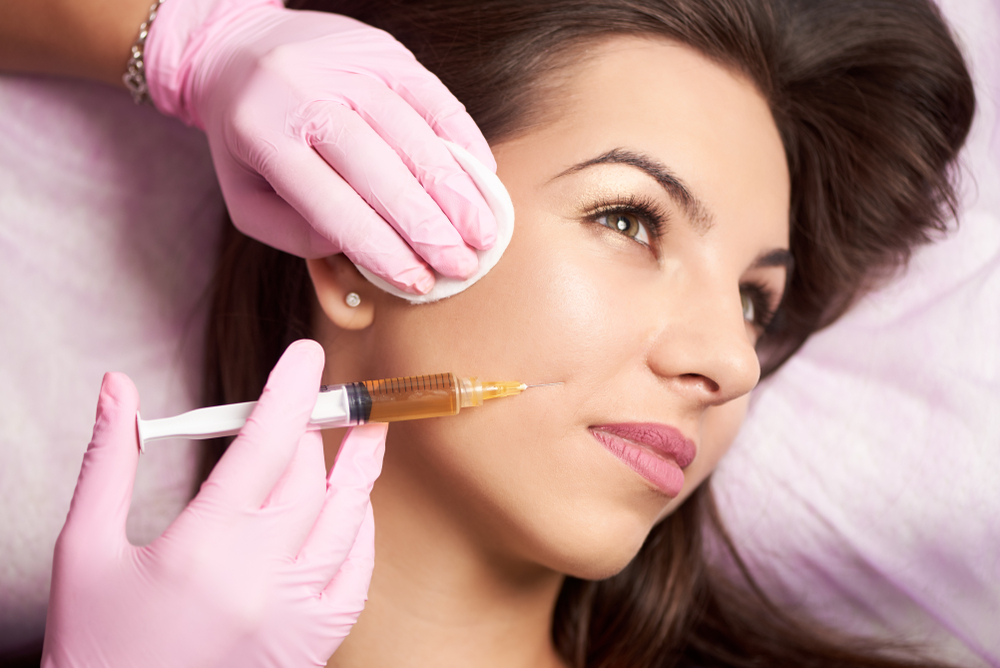 Photo Credit: Shutterstock
Photo Credit: Shutterstock
Several skincare products have been shown to visibly reduce the appearance of nasolabial folds. These products include vitamin C solutions, hydroxy acids, and topical peptides. Retinol-based topical products can also prevent the deepening of wrinkles (Mukherjee). Tretinoin can be used in combination with alpha hydroxy acids (AHAs) for additional skin-smoothing. The effects of topical skincare products require consistent use over the course of months to years.
Like many beauty fads, anti-wrinkle taping and patches often offer a quick fix without long-lasting effects. Face tape, a favorite among celebrities, lifts and tautly secures the cheek to produce a smoother appearance (Dorafshar et al., 2009). While temporarily beneficial, the effects end when the tape is removed. Long-term use, including the nightly application of Kinesio-tape to limit facial movement and thereby prevent wrinkles, may be ineffectual. In addition to the risks of skin irritation and damage with placement and removal, the tape essentially creates resistance training which strengthens the facial muscles and may deepen the dynamic folds. Silicone and gel patches create an occlusive environment that locks in moisture for an instant plumping effect. Upon patch removal, however, the moisture evaporates with no long-lasting effect on skin restoration (De Decker et al, 2023).
Through the creation of mechanical stress, the practice of massage affects body heat, blood flow, lymphatic drainage, and nervous system functions. As a result, facial massage or gua sha may alter surrounding tissues to produce an immediately improved appearance of laugh lines (Nishimura et al, 2017). In addition, long-term and consistent use may have beneficial effects at the cellular level including increased production of the building blocks of elastin and collagen to improve the appearance of fine lines and wrinkles. These effects may be amplified when massage is combined with anti-aging creams (Caberlotto et al., 2017).
Despite the many options available to help correct deep laugh lines, prevention is often more effective than cure. While we cannot control the effects of genetics, several lifestyle changes may help soften and delay wrinkle formation. To prevent laugh lines, it is advised to avoid smoking, use sun protection (sunscreens and hats), and hydrate appropriately. A proper and consistent skincare routine is key and should include topical antioxidants including vitamins A, E, and C, polyphenols, and flavonoids to reduce free-radical damage (Ganceviciene et al., 2012). In addition, as a dynamic facial line, Botox may be helpful by reducing facial muscle contraction (Hur et al., 2020). As Botox’s effects only last 3-6 months, however, repeat injections would be necessary (Kane 2003).
References
Caberlotto E, Ruiz L, Miller Z, Poletti M, Tadlock L. Effects of a skin-massaging device on the ex-vivo expression of human dermis proteins and in-vivo facial wrinkles. PLoS ONE. 2017. 12(3):e0172624. Doi:10.1371/journal.pone.0172624.
Calleja-Agius, Brincat, M., & Borg, M. (2013). Skin connective tissue and aging. Best Practice & Research. Clinical Obstetrics & Gynaecology, 27(5), 727–740. https://doi.org/10.1016/j.bpobgyn.2013.06.004
Chu S, Foulad DP, Atanaskova Mesinkovska, N. Safety profile for microneedling: A systematic review. Dermatologic Surgery 2021; 47(9):1249-1254.
De Decker I, Hoeksema H, Vanlerberghe E, Beeckman A, Verbelen J, De Coninck P, Speeckaert MM, Bondeel P, Monstrey S, Claes KEY. Occlusion and hydration of scars: moisturizers versus silicone gels. Burns 2023;49(2):365-379
Dorafshar AH, Aycock JK, Gottlieb L. Surgical adhesive tape for facial rejuvenation. Plast and Reconst Surg 2009. 123(2):62e-63e. Doi:10/1097/PRS.0b013e318195959a
Ganceviciene R, Liakou AI, Theodoridis A, Makrantonaki E, Zouboulis CC. Skin anti-aging strategies. Dermato-Endocrinology. 2012;4(3):308-319. Doi: 10.4161/derm.22804
Hur M-S, O. J, Yang H-M, Kwon H-J, Lee S, Lim HS, et al. (2020) Heights and spatial relationships of the facial muscles acting on the nasolabial fold by dissection and three-dimensional microcomputed tomography. PLoS ONE 15(8): e0237043. https://doi.org/10.1371/journal. pone.0237043
Jang D, Shim J, Shin DM, Noh H, Oh SJ, Park JH, Lee JH. Magnesium microneedle patches for under-eye wrinkles. Dermatologic Therapy. 2022;35:e15732.
Kane MA. The effect of botulinum toxin injections on the nasolabial fold. Plast Reconstr Surg. 2003;112(5 Suppl):66S-72S. Doi:10.1097/01.PRS.0000082195.44980.10
Kim, & Choi, J.-H. (2017). Effects of radiofrequency, electroacupuncture, and low-level laser therapy on the wrinkles and moisture content of the forehead, eyes, and cheek. Journal of Physical Therapy Science, 29(2), 290–294. https://doi.org/10.1589/jpts.29.290
Liu K, Duah Z, Chen L, Wen Z, Qu Q, Chen W, Zhang S, Yu B. Short-term effect of different taping methods on local skin temperature in healthy adults. Frontiers in Physiology. 2020;11:488. Doi:10.3389/fphys.2020.00488
Mukherjee S, Date A, Patravale V, Korting HC, Roeder A, Weindl G. Retinoids in the treatment of skin aging: an overview of clinical efficacy and safety. Clin Interv Aging. 2006;1(4):327-48. doi: 10.2147/ciia.2006.1.4.327. PMID: 18046911; PMCID: PMC2699641.
Nishimura N, Okuda I, Kunizawa N, Inoue T, Nakajima Y, Amano S. Analysis of morphological changes after facial massage by a novel approach using three-dimensional computed tomography. Skin Res and Tech 2017l23:369-375. Doi:10..1111/srt.12345
For more information, visit Dr. Samuel Lin's social media:






